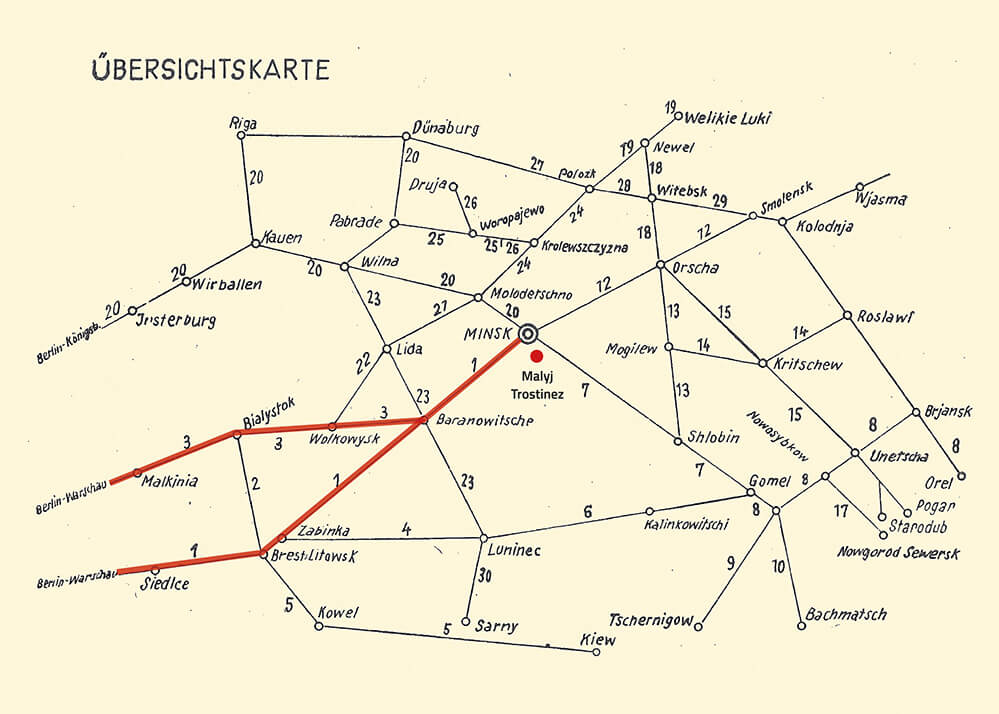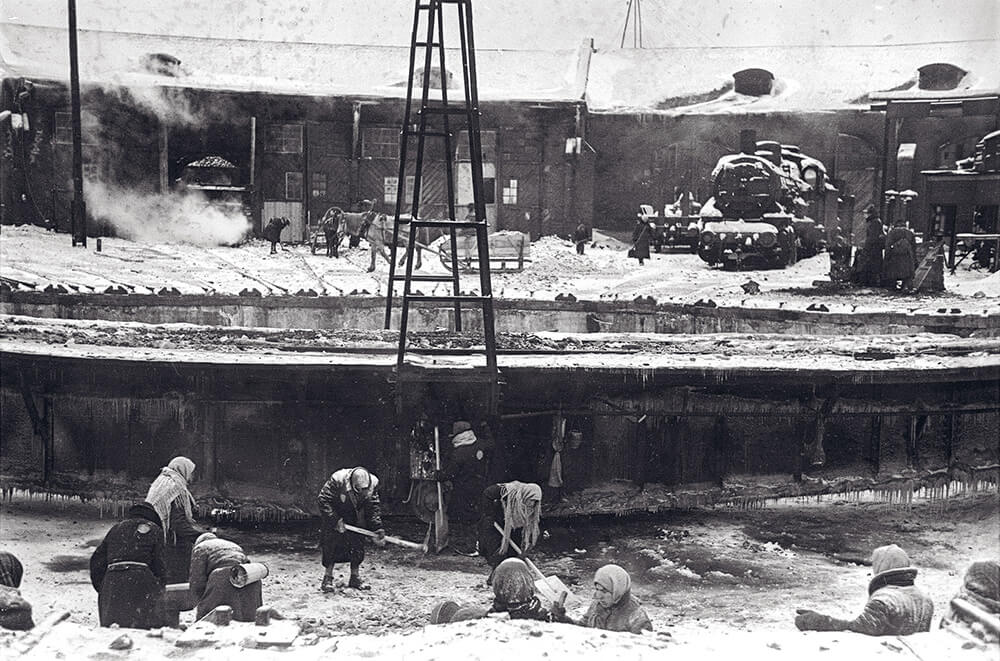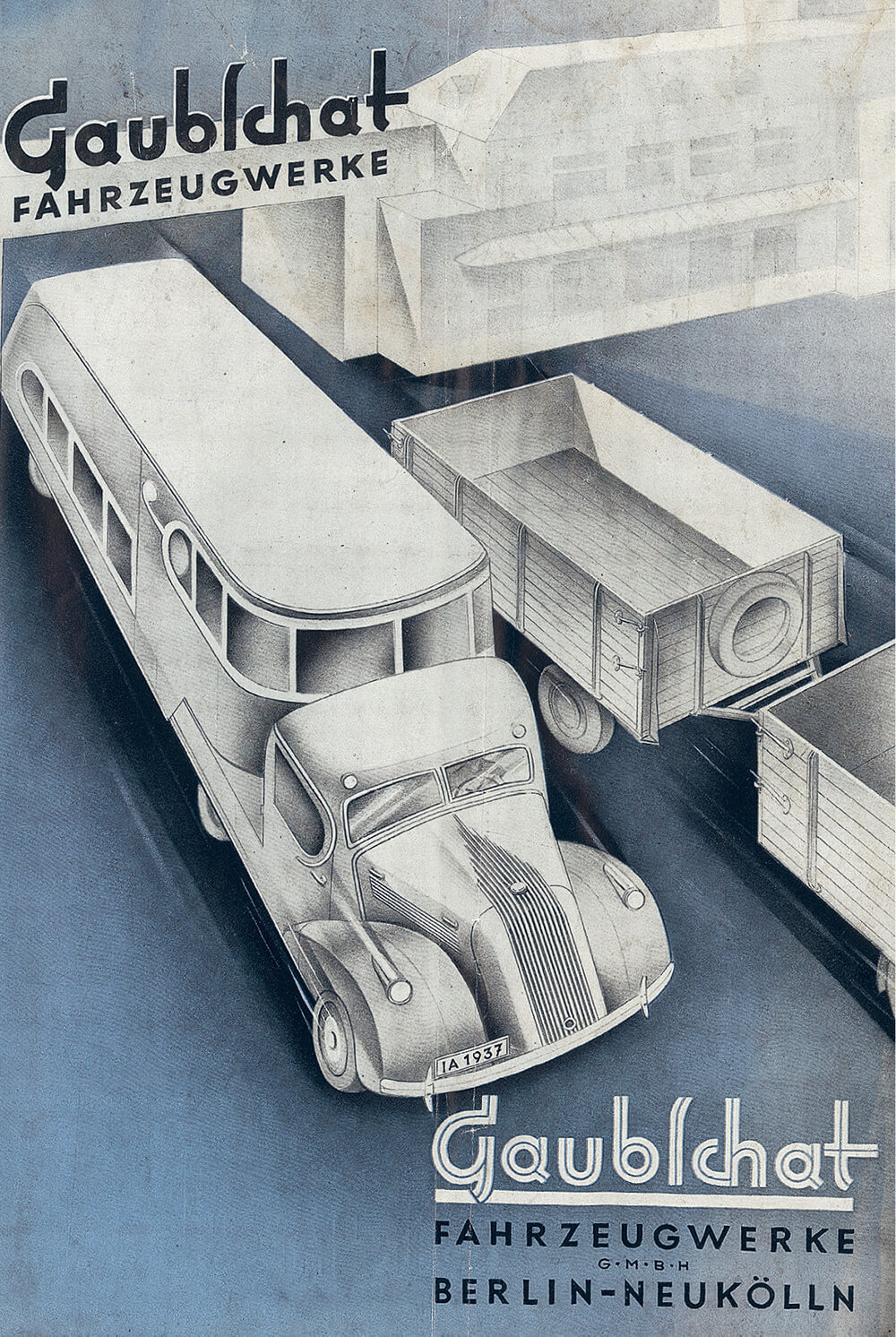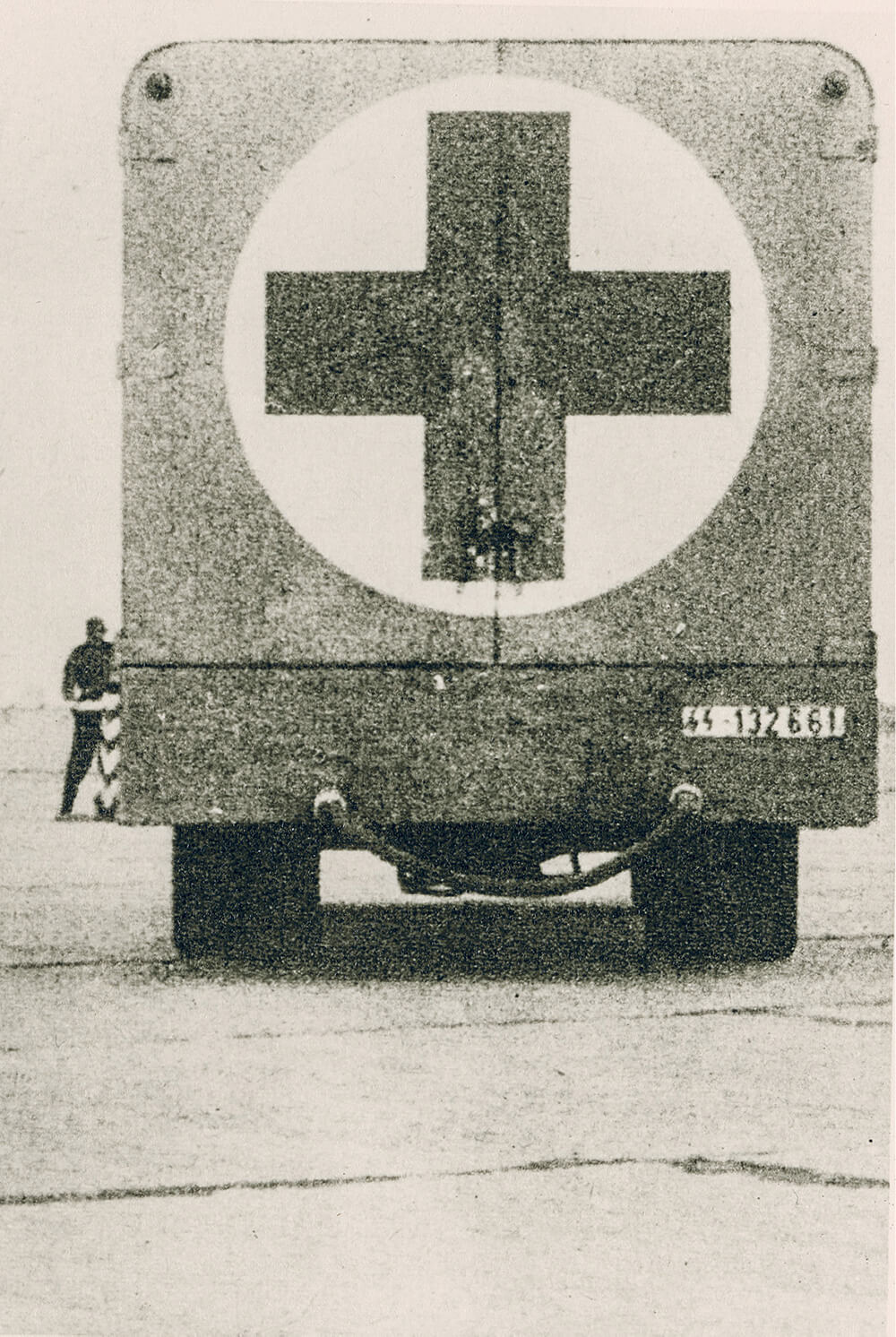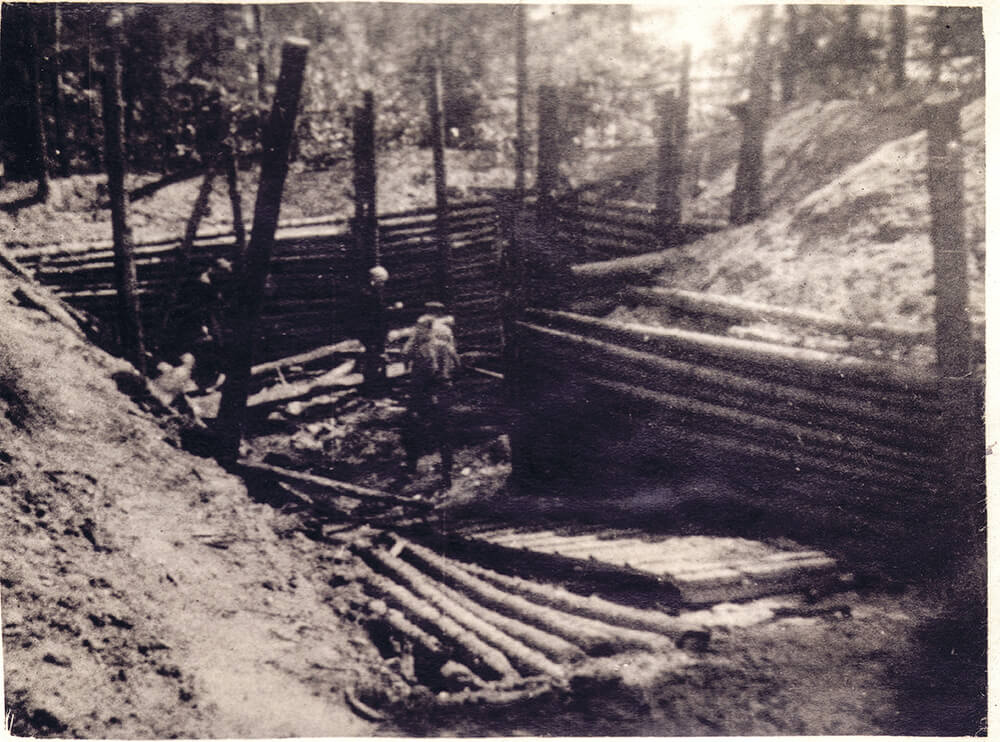Byelorussia
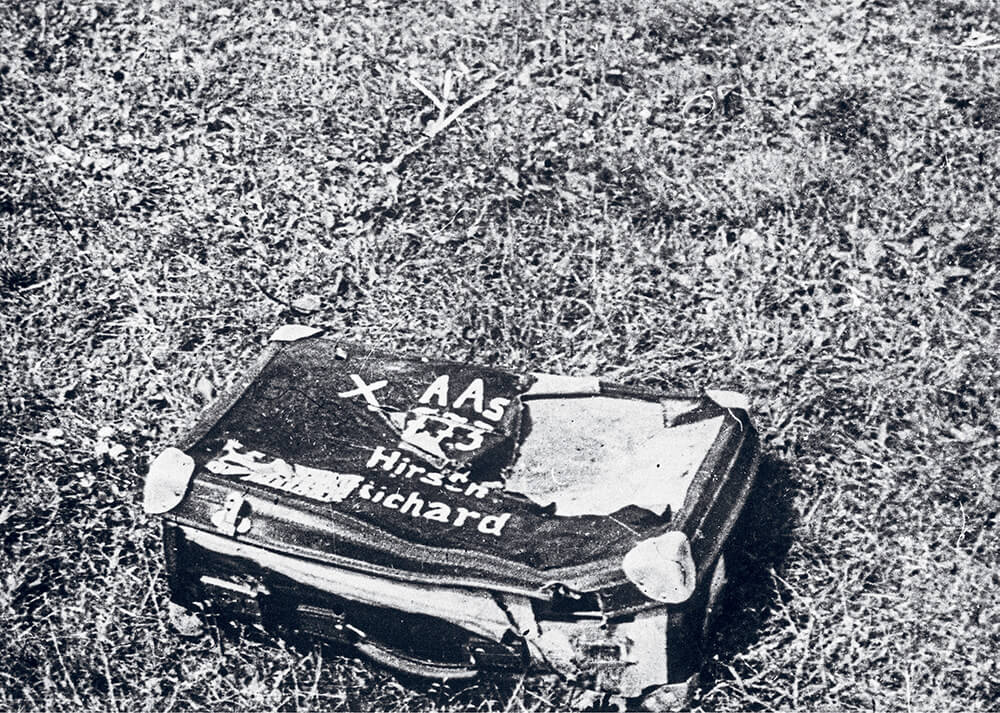
Suitcase of Richard Hirsch from Transport Bc, found in a pile of luggage belonging to victims of the Maly Trostenets death camp.
Belorusskij gosudarstvennyj muzej istorii Velikoj Otečestvennoj vojny, MinskJews from the Protectorate of Bohemia and Moravia were sent from Brno directly to the Minsk ghetto in November 1941. Together with German and Austrian Jews, they initially had an apparent chance of survival, as those capable of work left the ghetto every day to do forced labour. A large number of prisoners, however, did not survive the harsh climate and living conditions in the ghetto. Others were shot in the streets or inside houses during liquidation actions, or they were dragged onto trucks and taken away to the Maly Trostenets death camp.
In the summer of 1942, five transports from the Terezín ghetto, each carrying a thousand prisoners, also arrived in Maly Trostenets. Once disembarked, the Jews were rounded up in a meadow near the camp and were subjected to a selection. Only a few of the prisoners were taken to work at an SS farm. The others were either shot and thrown into an open pit in Blagovshchina Forest or were murdered in mobile gas vans. From the end of 1943, prisoners were forced to exhume the remains of bodies from mass graves and to burn them. Other executions were carried out in the Shashkovka Forest, where the victims were immediately burned.
In July 1942, Transport AAy was dispatched from Terezín to Maly Trostenets, but the end station was Baranovichi in Byelorussia. The prisoners were taken off the train and sent to a nearby wood where they were murdered in a single afternoon.
A mass grave in the Shashkovka woods near the Maly Trostenets death camp. The ramp for unloading freight wagons can be seen at the top left. This image is from the documentation of the Soviet Union’s Extraordinary State Commission, July 1944.
Belorusskij gosudarstvennyj muzej istorii Velikoj Otečestvennoj vojny, Minsk